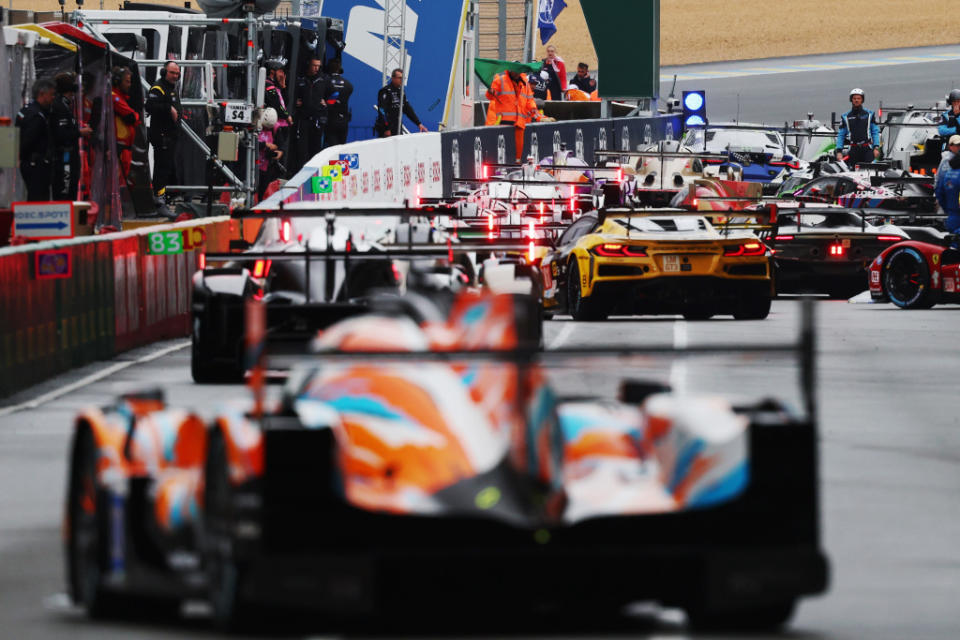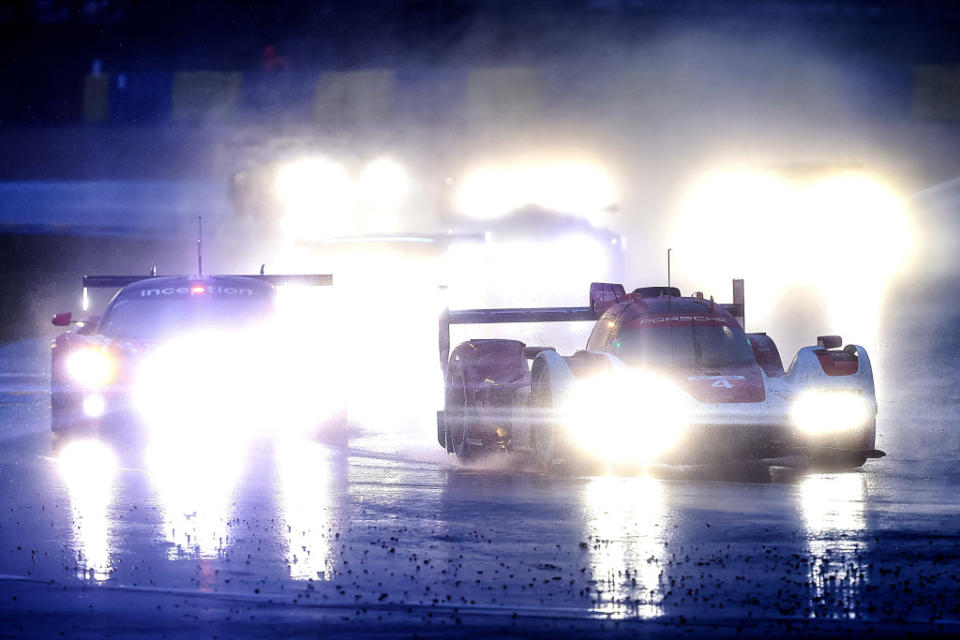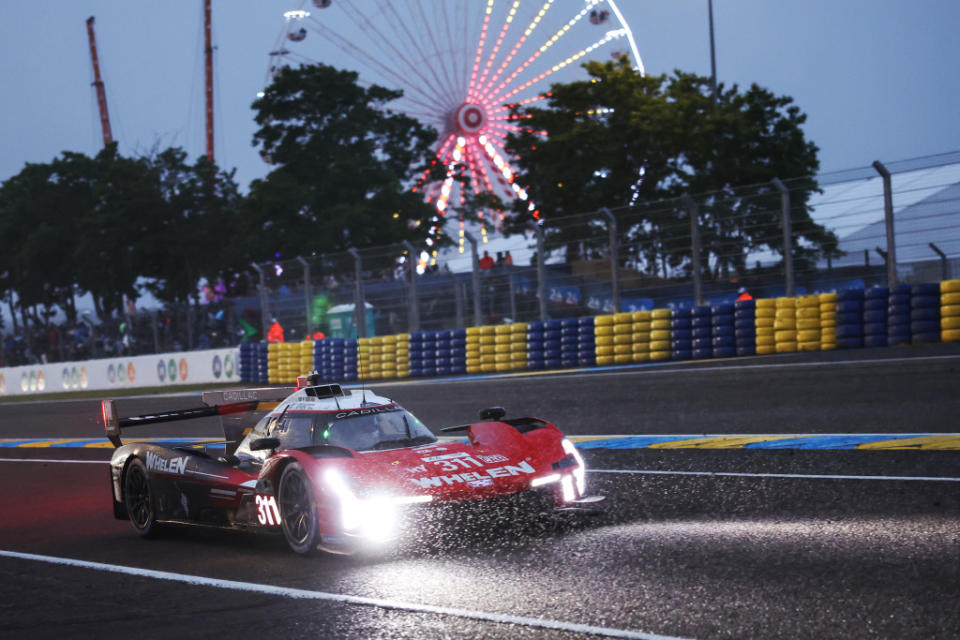Le Mans to Watkins Glen: The grin and grind of back-to-back enduros

Jet lag is the least of it.
Oh, sure, six hours’ time difference between Le Mans and Watkins Glen surely has an effect. But compared to the fatigue of a 24-hour race, with a six-hour race starting seven days almost to the hour after that 24-hour race ended, the jet lag is a small part. But it goes way beyond just this weekend and last.
“It’s tough,” says Porsche Penske Motorsport driver Nick Tandy, before clarifying that it’s much tougher for the crew than the drivers. “For our crew, we raced at Laguna for a weekend. The next week, we tested at Watkins Glen for two days. The next week, we went to Detroit to race. The next week, we came [to Le Mans] to test, then we race at Le Mans and then we go straight to the Six Hours of the Glen. So it’s at least a six-, seven-week run where the cars have been running on track, the crew have been obviously working on the cars traveling back and forwards all over the states and to Europe and back.”
PPM has the luxury of a team running in the U.S. out of Mooresville, N.C., and the World Endurance Championship team operating out of Mannheim, Germany. But running a third car at the 24 Hours of Le Mans for the IMSA WeatherTech SportsCar Championship regulars — Tandy, Mathieu Jaminet, Felipe Nasr and reserve driver Dane Cameron — means the Mannheim squad needed some additional help. That’s not just some crew from the U.S. on hand at Le Mans, but engineers in Mooresville monitoring telemetry and in-car camera feeds to assist those on the ground in France.
“We’ve got a pretty deep team and we can rely on the crew that we have back in the U.S.,” explains PPM’s managing director, Jonathan Diuguid. “They’re prepping both race cars for Watkins Glen they did a rollout at the Statesville airport in North Carolina that went really smoothly. The No. 4 car was built in the U.S., but all the spares, noses, gearboxes, suspension… it was all prepped by the WEC program. So it’s it’s all about utilizing the the global team that we have to make it all happen. The drivers have an easy life. They just get on airplanes, go drive race cars, so I’m not too worried about them; but they do a great job and we’ve got a deep driver lineup.”
Having facilities on both sides of the Atlantic helps Porsche Penske Motorsport swing straight from Le Mans to the Glen. Jakob Ebrey/Motorsport Images
The drivers are quick to acknowledge that they have it better than the crews. The positive is that there’s no rush to move cars and equipment across the Atlantic. The cars that U.S.-based teams raced at the 24 Hours of Le Mans are extra chassis, and they often employ the help of European-based teams — their own or others affiliated with their program — to make it work. For many drivers, the three-week break after the Sahlen’s Six Hours of the Glen will be most welcome.
“At the end of the day, the drivers are in a luxurious position where people are around you to take care of you, whether that’s physios or just the whole team infrastructure, the hospitality,” says Jack Aitken, driver of the Nos. 311 and 31 Whelen Cadillac Racing V-Series.R at Le Mans and in the WeatherTech Championship respectively. “The mechanics get none of that, and to an extent the engineers as well. So they’ve already had a very hard month-and-a-half because IMSA has been pretty full gas recently. They’ve been prepping and getting the [Le Mans] car ready, doing shakedowns, getting it shipped in time. So they’re gonna be wrecked, I think, by the time we get to Watkins. We’re not the only team in that position, but it’s going to be really tough. After that, we have a few weeks to reset.”
IMSA regulars like Jack Aitken had been on a long grind before they even got to France. Jakob Ebrey/Motorsport Images
Some of the drivers, though, don’t get that reset time. After the Glen it’s off to Belgium for the CrowdStrike 24 Hours of Spa. Then maybe to Italy for the European Le Mans Series round at Imola before WEC returns to action in Brazil or IMSA heads to Canada. And for some drivers who weren’t in Detroit, they were racing the (usually) 24 Hours of the Nürburgring. The summer is a grind for those plying their trade in international sports car racing.
“I’m trying to not think about it, because if you think about it ahead, it’s game over,” says Andrea Caldarelli, splitting his time between Lamborghini’s SC63 GTP/Hypercar and the Huracán GT3 Evo2 in various championships. “I’m taking it one by one. And I will have had a small break at home for like one day after [Le Mans] to see my kid and my family. So I try to break it up, because otherwise it’s going to be hard. It’s going to be really hard and it’s funny that all the major races are back all together.”
There are others, though, who can’t get enough.
“It’s not tough because it’s what I want to do,” says Oliver Jarvis, going from winning LMP2 at Le Mans to the No. 9 Pfaff Motorsports McLaren 720S in GTD PRO. “ I’m actually really looking forward to getting back in the car and hopefully we can have a good result. I’m really enjoying my time with the Pfaff guys and girls. Watkins is also one of my favorite tracks; I think every driver loves it — it’s fast and fun.”

 Yahoo Autos
Yahoo Autos 

